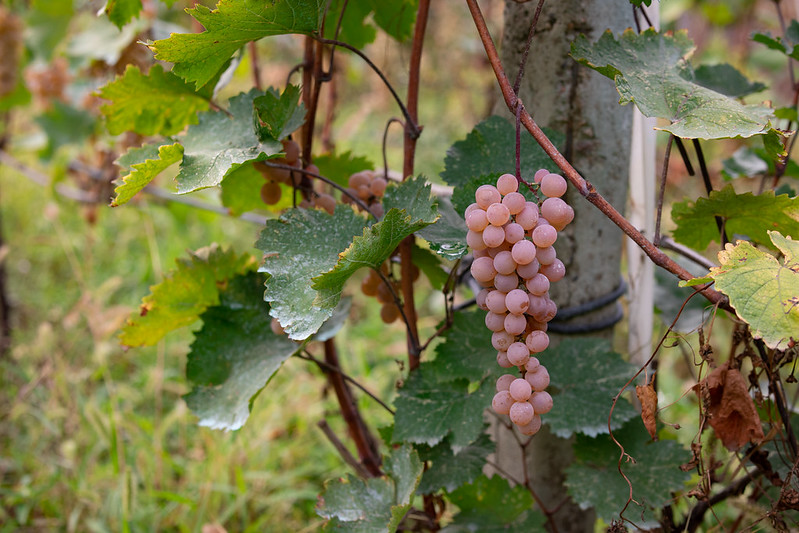Rtveli
Georgia’s Grape Harvest Festival—A Celebration of Hands, Hearts, and Wine
2026/09/19 - 2026/10/09
Every autumn, as Georgia’s vineyards in regions like Kakheti and Imereti turn to gold and crimson, families and friends gather for the traditional harvest festival called Rtveli. Across the countryside, laughter and folk songs fill the air as people pick grapes, feel the cool juice on their bare feet during grape stomping, and breathe in the aroma of fermenting wine. Generations are united by the warmth of shared feasts and the joy of the harvest.
Rtveli takes place from late September to early October, when the grapes are at their sweetest. Both locals and travelers are warmly welcomed. It’s the perfect opportunity to experience Georgian hospitality, the rhythms of rural life, and the world’s oldest wine culture. Whether you join a family’s small-scale harvest or a village-wide festival, Rtveli promises a memorable, multisensory experience.
Main Attractions
Hand-Picking Grapes
The heart of Rtveli is everyone working together to harvest the grapes. In the cool morning air, ripe grape clusters are snipped into wicker baskets. The sweet juice lingers on your fingers, the sound of leaves brushing and folk songs echo across the fields, creating a lively and communal atmosphere.
Traditional Grape Stomping and Winemaking
After the harvest, everyone gathers around large wooden vats to stomp grapes barefoot. The juice splashes, children laugh, and the scent of crushed grapes and fermenting wine fills the air. The freshly pressed juice is poured into qvevri—large clay jars—buried underground, following an 8,000-year-old tradition.
Key Events
Rtveli feasts feature freshly baked khachapuri (cheese bread), mtsvadi (grilled meat), and churchkhela (walnut and grape candy). Polyphonic singing and folk dancing break out spontaneously, led by the tamada (toastmaster) who offers heartfelt toasts to ancestors, the harvest, and the future. In some regions, parades and grape-throwing contests add to the festivities.
Costumes and Decorations
Women often wear colorful traditional dresses and scarves, while men don chokha—woolen coats with ornamental decorations. Homes and tables are decorated with grapevines, sunflowers, and baskets of fruit. Embroidered cloth, silver jewelry, and the vibrant colors of fresh produce add to the festival’s sensory richness.
Traditional Food & Drink
Tables are filled with khinkali (dumplings), lobio (bean stew), homemade cheese, and pickles—classic flavors of Georgia. The star is, of course, the wine: from freshly pressed juice to cloudy, fermenting young wine. Churchkhela hangs from rafters, and the aroma of baking bread mingles with the scent of fermenting grapes at every meal.
Cultural and Historical Background
Rtveli’s history is as old as Georgia’s reputation as the “cradle of wine,” stretching back some 8,000 years to the Neolithic era. Archaeological evidence shows that Georgians were making wine in qvevri (clay jars) as early as 6,000 BCE. Over the centuries, grape cultivation and winemaking became more than agriculture—they became the very identity of families, villages, and the Georgian nation.
“Rtveli” means “harvest” in Georgian, and it’s a time for families, relatives, neighbors, and friends to gather and give thanks for the year’s bounty. The work starts early, with grape picking, stomping, qvevri filling, and finally, the communal feast—all passed down as intergenerational traditions. At the feast, the tamada (toastmaster) leads toasts to ancestors, the land, family, and the future, accompanied by songs and stories.
During the Soviet era, collectivization and mass production weakened the family-based tradition of Rtveli, but after independence, it was revived as a vital celebration of family and community bonds. Today, Rtveli is recognized as a living cultural heritage, embodying Georgian identity, hospitality, and gratitude for the land, attracting people from across Georgia and around the world.
Participant Voices
When I joined Rtveli in Kakheti from Tbilisi, I was welcomed like family. Picking grapes with locals, singing folk songs, and tasting fresh wine from the qvevri—this was the most memorable experience I had in Georgia.
Fun Facts
- Georgia is considered the “cradle of wine,” with archaeological evidence of winemaking dating back over 8,000 years.
- Traditional winemaking uses qvevri—large clay jars buried underground for fermentation.
- There are more than 500 indigenous grape varieties in Georgia, many of which are harvested during Rtveli.
Festival Dates
Rtveli is held annually from late September to mid-October, mainly in Georgia’s wine regions such as Kakheti and Imereti.
The event schedule is subject to change. Please check the official website for the most up-to-date information.
Information
| Name | Rtveli |
| Country | Georgia |
| Area | Kakheti |
| Date | 2026/09/19 - 2026/10/09 |
| Link |
Upcoming Festivals
Dia de la Virgen de Guadalupe Mexico
A Festival Weaving Faith, Fervor, and Mexican Identity
2025/12/11L'Escalade Switzerland
Geneva’s Grand Winter Festival of Courage, Chocolate, and Community
2025/12/12Umkhosi Wokweshwama South Africa
The Zulu First Fruits Festival—A Sacred Celebration of Land, Ancestors, and Renewal
2025/12/12Lucia Festival (St. Lucia's Day) Sweden
A Festival of Light Illuminating the Nordic Darkness
2025/12/15Las Posadas Mexico
The Luminous Quest for Sacred Shelter
2025/12/22Noche de Rabanos (Night of the Radishes) Mexico
A celebration blending art, farming heritage, and cultural traditions
2025/12/23Chant of the Sybil on Majorca Spain
A Medieval Prophecy Echoes Through Majorcan Christmas
2025/12/23‘Hatajo de Negritos’ and the ‘Hatajo de Pallitas’ Peru
A Christmas Festival of Rhythm, Faith, and Afro-Andean Heritage in Peru’s Ica Region
2025/12/24Harbin International Ice and Snow Sculpture Festival China
A Frozen Wonderland Where Art and Adventure Merge
2025/12/24Takanakuy Peru
The Andean Festival of Reconciliation by Fist—How Confrontation Creates Year-End Peace and Bonds

